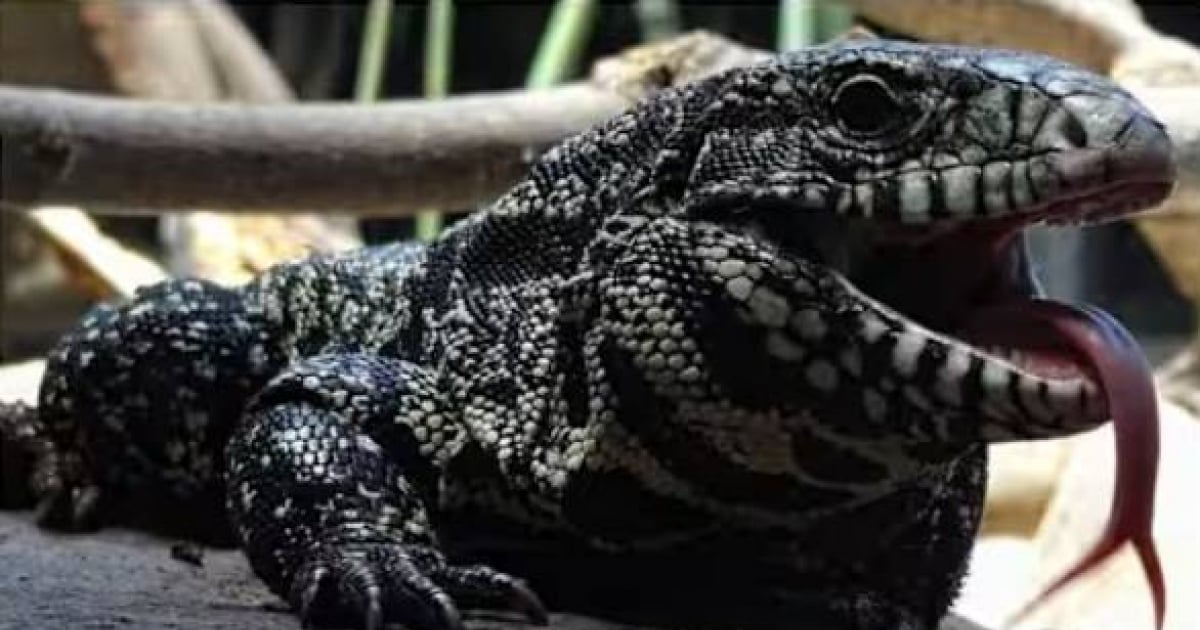South Florida is on high alert following the sighting of a new reptilian invader: the giant lizard known as the black and white Tegu, which poses a potential threat to local wildlife. The Florida Keys National Wildlife Refuges Complex recently shared on social media that this invasive species was spotted for the first time in northern Key Largo last Tuesday.
Residents and tourists near Card Sound Road in North Key Largo are being cautioned by scientists to remain vigilant for these sizable lizards, which can grow up to nearly five feet (1.5 meters) in length.
The Dangers of the Tegu
Originating from South America, including regions like Brazil, Uruguay, Paraguay, Bolivia, and Argentina, the black and white Tegu has emerged as a significant threat due to its predatory nature, especially towards vulnerable species in the area. These lizards are known to prey on creatures such as the American crocodile and the endangered Key Largo woodrat, as well as juvenile gopher tortoises.
The Florida Fish and Wildlife Conservation Commission (FWC) has identified Tegus as an invasive species, attributing a negative impact on the state's native wildlife. Although some individuals keep these lizards as pets due to their intelligence and trainability, releasing them into the wild disrupts the ecological balance, according to reports from Local 10.
Human Safety and Tegu Behavior
While Tegus do not pose a direct threat to humans, their presence is troubling due to their predatory habits and rapid adaptation to new environments. Tegus are not only quick runners but also adept swimmers, allowing them to navigate between various habitats with ease.
Though non-venomous and rarely aggressive toward humans unless provoked, Tegus can be defensive. Their bites are painful and can cause injuries, and they possess sharp claws used for self-defense.
How to Respond to a Tegu Sighting
Authorities urge the public to be observant and report any Tegu sightings to the FWC's Exotic Species Hotline at 1-888-Ive-Got1. Monitoring and reporting these sightings are crucial to curbing their spread and safeguarding local species from predation.
However, officials advise against attempting to capture the lizards without proper experience and discourage feeding them, as it may encourage them to frequent populated areas.
The Growing Threat of Invasive Reptiles in Florida
The black and white Tegu is not the only invasive reptile causing ecological disruption in Florida. Alongside the Burmese python, another invasive reptile wreaking havoc on wildlife, Tegus add to the growing concerns in the battle to preserve the state's biodiversity.
In summary, although Tegus don't pose an immediate danger to people, their potential to devastate local fauna is significant. Efforts by authorities to contain the spread of this species continue to protect Florida's native wildlife.
FAQs About Tegus in Florida
Why is the Tegu considered a threat to Florida's ecosystem?
The Tegu threatens Florida's ecosystem due to its predation on vulnerable species and its ability to adapt quickly, disrupting the ecological balance.
How large can a Tegu grow?
A Tegu can grow up to nearly five feet (1.5 meters) in length, making it a sizable presence in the wild.
What should you do if you encounter a Tegu?
If you see a Tegu, report the sighting to the FWC's Exotic Species Hotline and avoid capturing or feeding it to prevent further disruption.
